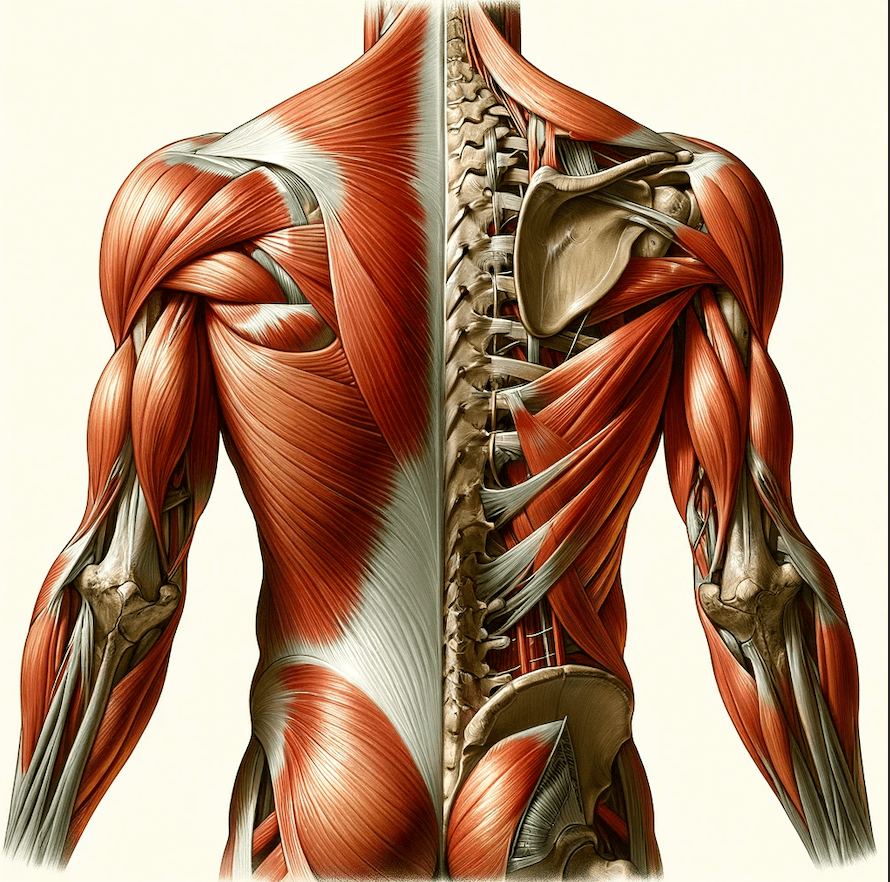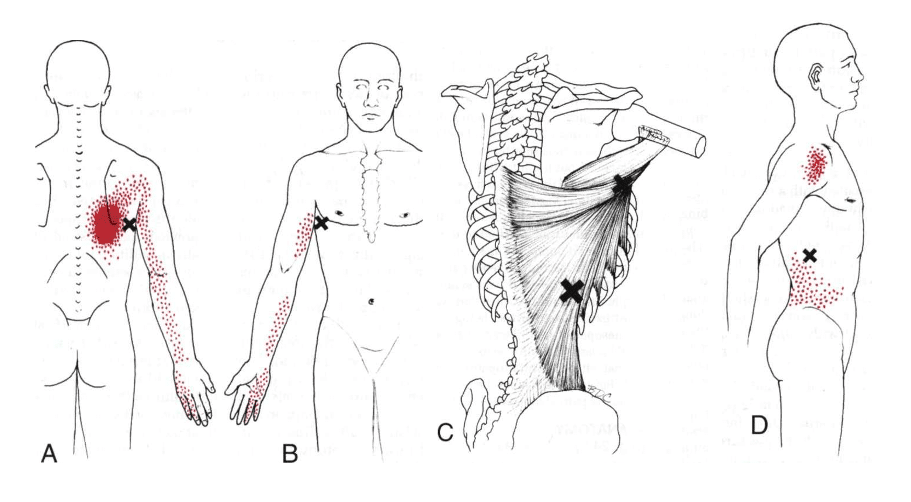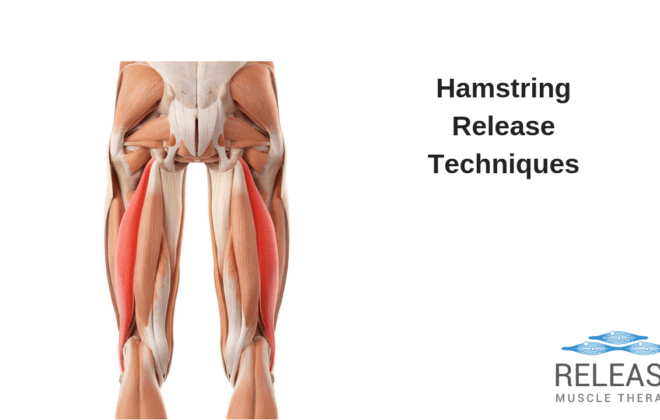Latissimus Dorsi Trigger Points | How To Find And Release
If you’ve ever felt a sharp pain in your back or struggled with shoulder discomfort, you may be experiencing the effects of latissimus dorsi trigger points. These pesky knots can cause more than just localized pain; they often refer discomfort to other areas of your body, complicating your day-to-day activities.
Luckily, there’s a way to address this muscular irritation and reclaim comfort.
A fascinating aspect of the large muscle spanning our lower back – the latissimus dorsi – is its ability to develop sensitive spots known as trigger points. These can manifest various symptoms that disrupt our sense of well-being.
In this blog post, we will guide you through identifying and releasing these covert culprits to alleviate related pains such as headaches and shoulder issues.
With practical tips and techniques, you’ll learn how to find relief from the comfort of your home without needing professional intervention for every flare-up. Ready to tackle those trigger points? Let’s dive in!

Key Takeaways
- The Latissimus Dorsi muscle, commonly known as “lats,” is a broad muscle that can develop painful trigger points due to stress, overuse, or injury. These knots can cause discomfort in the back and shoulders and may even radiate pain down into the arms.
- Identifying trigger points involves gently probing the area around and below the shoulder blade for tender spots. A simple ball placed against a wall can be used for self-massage techniques to apply pressure and release tension in these areas.
- Neuromuscular therapy is an effective massage technique for addressing soft tissue pain from Latissimus Dorsi trigger points. Making lifestyle adjustments such as improving posture and incorporating specific exercises like stretching, foam rolling, and resistance exercises helps manage pain and prevent future issues with this muscle group.
- Specific exercises targeting the “lats,” including doorway stretches, ball releases, thoracic extensions, lat pulldowns, scapular squeezes, and resistance stretches are essential to enhance flexibility, strengthen muscles around the Latissimus Dorsi and maintain overall back health.
- Consistency in treating Latissimus Dorsi trigger points through self-care methods not only provides immediate relief but also plays a crucial role in preventing long-term muscular issues—self-management of muscular health leads to improved mobility and well-being.
Understanding Latissimus Dorsi and Trigger Points
The Latissimus Dorsi, often called “lats,” is a broad muscle that covers the width of your middle and lower back. It connects the upper arm bone known as the humerus to your spine and helps with movements like pulling and lifting.
Trigger points in this muscle create zones of pain that can affect your shoulder, back, and even down into your arms. These sore spots develop due to stress, overuse, or injury.
Dealing with trigger point pain from latissimus dorsi requires knowledge about where these points are located. For instance, an axillary trigger point near your armpit can send shooting discomfort towards the inferior angle of your scapula and further along the arm.
To manage this kind of myofascial pain effectively, you might use self-massage techniques with simple tools like a ball placed against a wall for pressure on tight areas. Recognizing these painful regions becomes crucial for applying targeted treatment strategies such as neuromuscular therapy or specific stretches that cater to alleviating tension in the lats.
With an understanding of how trigger points contribute to muscular discomfort in latissimus dorsi, let’s explore how you can identify them in order to better treat this common source of back and shoulder pain.
Identifying Trigger Points in the Latissimus Dorsi

If you’re experiencing pain in your latissimus dorsi muscle, it’s possible that trigger points are the cause. These small, tight knots can form in the muscle and lead to discomfort and referred pain.
- Start by finding a quiet space where you can focus on locating these trigger points.
- Use your fingers to gently probe the back, specifically the area around the shoulder blade and below it.
- Look for spots that feel notably more sensitive or tender than surrounding areas, as these may indicate a trigger point is present.
- Apply light pressure with your fingertips to these sensitive spots; if the pain radiates or increases, a trigger point is likely there.
- The upper trigger point is generally found two finger widths beneath where the back of the shoulder meets the spine.
- To identify an axillary trigger point linked to lower back pain and discomfort radiating to the hand, move your fingers toward your armpit along the thoracic region.
- Remember not just to focus on painful areas; sometimes related muscles like serratus anterior or subscapularis harbor trigger points contributing to latissimus dorsi discomfort.
Treatment Techniques for Latissimus Dorsi Trigger Points
Discover effective methods to alleviate discomfort by addressing trigger points in the latissimus dorsi, ensuring your back muscles function optimally and pain is a thing of the past.
Neuromuscular therapy
Neuromuscular therapy offers a specialized form of massage that targets the soft tissue to bring relief from muscle pain, including discomfort originating from Latissimus Dorsi trigger points.
This technique applies alternating levels of concentrated pressure on areas where you experience pain or have developed trigger points. Using methods rooted in scientific understanding of muscular and nervous system interactions, neuromuscular therapy can help interrupt the stress-tension-pain cycle by calming overactive nerves and relaxing tightened muscles.
Engaging in this type of therapy might just be the breakthrough you need to manage your Latissimus Dorsi muscle issues effectively. It requires trained professionals who understand how to locate and treat trigger points, using strategies like ischemic compression, where sustained pressure is applied to reduce localized circulation temporarily before releasing it to flood the area with fresh blood.
You’ll find that consistent sessions can potentially enhance flexibility, improve posture, and offer significant pain reduction—benefits well worth considering for those suffering from chronic back discomfort or related conditions such as thoracic outlet syndrome or frozen shoulder.
Lifestyle modifications
Making changes to your daily routine can help manage and prevent discomfort from trigger points in the Latissimus Dorsi muscle. Staying aware of your posture, especially if you spend long hours sitting or standing, plays a crucial role in relieving tension.
Adjust your workspace so that it supports proper alignment of the spine; an ergonomic chair might be a good investment.
Incorporate activities like swimming or rowing into your fitness regimen, as these exercises engage the “lats” and promote flexibility. Temporarily limit heavy lifting or repetitive motions that could overwork the muscle and lead to tightness.
For those who enjoy gardening or racquet sports, take regular breaks to stretch and ensure you are using techniques that do not strain the back muscles.
Regular self-massage can also provide some relief from pain associated with Latissimus Dorsi trigger points. Use a ball against a wall to target specific areas for treatment; this helps release tension without needing professional intervention every time.
Manage stress levels through relaxation techniques such as yoga or deep breathing exercises, because mental tension often translates into physical tightness in the lats.
Specific exercises and stretching to try

- Begin with a doorway stretch: Stand in an open doorway and place your hands on the frame above head level. Lean forward gently until you feel a stretch along your back and hold for 20-30 seconds.
- Move on to the ball release exercise: Place a ball between your back and a wall, positioned at the trigger point near your “lats.” Press against it firmly, rolling slowly to massage the area.
- Include thoracic extensions: Sit or stand straight with hands clasped behind your head. Gently arch backward only using your upper back (thoracic), aiming for extension without pain.
- Perform lat pulldowns: Use a resistance band or machine at the gym to pull weight down before you, targeting both upper and lower parts of your lat muscles.
- Try foam rolling: Gently roll your “lats” over a foam roller, lingering on tender spots but not pushing to the point of severe pain.
- Incorporate scapular squeezes: While sitting or standing, squeeze shoulder blades together as if holding something between them. Release after five seconds, repeating several times for relief in the posterior shoulder region.
- Implement resistance stretches: Hold onto something sturdy with one hand while leaning into that arm; this will apply gentle resistance to help stretch out tight areas within the “lats.”
Conclusion
Understanding and addressing trigger points in the Latissimus Dorsi muscle can lead to significant relief from back and shoulder discomfort. With the right tools, such as a simple ball, and using proper techniques, you can take charge of your own pain management effectively.
Regular attention to these troublesome spots not only eases current pain but may also prevent future issues. Remember that consistency is key – incorporating these exercises into your routine ensures long-term benefits for muscle health and mobility.
Take control of your well-being today by learning how to find and release those pesky trigger points!
Sam Visnic
Most Popular Posts
Categories
- Deep Gluteal Pain Syndrome (8)
- Deltoids (2)
- Foam Rolling (2)
- Glutes (9)
- Hamstrings (5)
- Hypnosis for Pain (3)
- Lats (2)
- Levator Scapulae (4)
- Lifestyle (8)
- Massage Therapy (39)
- Mobility (21)
- Movement and Exercise (19)
- Muscles (22)
- Nutrition (2)
- Obliques (1)
- Pain (25)
- Pectorals (3)
- Piriformis (3)
- Plantar Fasciitis (11)
- Psoas (11)
- Quadratus Lumborum (3)
- Quadriceps (2)
- Rhomboids (3)
- Sciatica (1)
- Serratus Anterior (1)
- SI Joint (14)
- Sternocleidomastoid (1)
- Stretching (18)
- Subscapularis (1)
- TMJ (2)
- Trapezius (1)
- Uncategorized (12)









